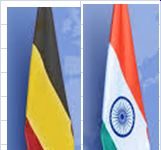http://www.freepressjournal.in/business/an-abiding-faith-in-the-road-sector/1169015
This interview also appeared at http://www.moneycontrol.com/news/features-2/bullish-on-roads-sector-it-is-growing-like-never-before-irbs-mhaiskar-2431619.html
A man finds his road — Virendra Mhaiskar
— By | Nov 13, 2017 11:00 am
 Virendra D. Mhaiskar is a man with a focus that is firmly set on connecting India with world class highways infrastructure. As chairman and managing director of IRB Infrastructure Developers Limited, his views on the roads sector are much sought after. First, because he is one of the largest players in this sector. Second, because he has constantly identified business opportunities in the roads sector much before most people. That is why speaking with him tell you which way this sector is actually headed. It also tells you how IRB will be doing in the coming months.
Virendra D. Mhaiskar is a man with a focus that is firmly set on connecting India with world class highways infrastructure. As chairman and managing director of IRB Infrastructure Developers Limited, his views on the roads sector are much sought after. First, because he is one of the largest players in this sector. Second, because he has constantly identified business opportunities in the roads sector much before most people. That is why speaking with him tell you which way this sector is actually headed. It also tells you how IRB will be doing in the coming months.
An engineer by qualification, he decided to look at the roads sector, and made his debut in 1998 when he promoted IRB. His company enjoys the distinction of completing India’s first BOT (build-operate-transfer) project. In fact, his accomplishments have often become benchmarks for other players in this sector.
Today IRB ranks amongst the biggest and the best in India. It has completed prestigious projects like the Mumbai – Ahmedabad Highway that is part of the famous Golden Quadrilateral (GQ) which in turn connects the four metropolises in India (Mumbai Delhi, Calcutta and Chennai.
IRB has also successfully launched India’s first InvIT Fund. To make this Fund attractive, he has transferred seven of IRB’s best revenue generating projects to the fund, thus creating a better value proposition for its stakeholders.Today IRB operates one of the the largest portfolios in India of 21 BOT highway projects which collectively account for a length of 12,000 lane km. Out of these 21 projects, 6 are of the BOT type; 8 projects under various stages of construction and 7 projects under O & M contracts. IRB’s total value of assets under operation is worth around Rs.35,000 crore. Te company’s construction order book is worth around Rs.9,500 Crores.
For his contribution to the construction sector, Mhaiskar was honoured with the “Young Turk of the Year” award at the 6th Edition of CNBC TV 18 India Business Leader Awards in 2010.
Mhaiskar spoke to R.N.Bhaskar of FPJ about why he remains bullish on the roads sector in India, more than ever before. Given below are edited excerpts:
The roads sector has seen its ups and downs in India. It has had to grow using concepts like PPPs (public-private partnerships), BOT and TOT (toll-operate-and-transfer). Some say that the investment climate for the roads sector is muddied, and not very clear. But you remain extremely upbeat about this sector. Why?
Mhaiskar: I am upbeat about it for three reasons.
The first reason is simple. Never before has the scope of the roads sector been enhanced like recently. Today, the National highways — which accounted for anywhere between 55,000-70,000 km out of 3.5 million km of roadways in India — has been expanded to account for around 2 lakh km . This has become possible because roads that used to belong to the state have now been taken over by the central government.
What the present government did was to set up norms that would help decide which road should be treated as a national highway and which as a state roadway. The most critical parameter is the passenger car unit (PCU) count. If the count crosses a certain level, that roadway gets classified as a national highway.
When a state roadway gets reclassified as a national highway, two things happen. First, the entire maintenance budget for the highway moves from the state to the centre. Second, since the centre takes away a highway that used to belong to the state earlier, you know that it is only a matter of time that this road will be widened to become a 4-6 lane highway. All of a sudden the centre’s pie for road development and maintenance has expanded manifold.
That is certainly something to be bullish about, if you are in the business of building and looking after roads.
True. And what would the second reason be?
Mhaiskar: For the first time in decades, the entire process of land acquisition is being dealth with aggressively. When the previous government brought in the revised land acquisition Act, and the present government failed to get this Act modified, many thought that the road building exercise would slow down. But this government decided that it was time to move ahead. It agreed to pay three times the market rate for land. Remember, till now there were no norms for land acquisition. At best you could acquire land at circle rates. Now the farmer was getting three times the market rate.
Yet, it is amazing that the government resolved to move ahead. What began at Rs.5,000 crore or Rs.7,000 crore a year spent for land acquisition has now zoomed to Rs.30,000 crore.
It sends out a clear signal that road development will go ahead, in spite of the high cost of land acquisition. That is a very good sign for road developers.
And the third reason?
Mhaiskar: Take one figure. The government says it has spentnational highways, state highways, a lakh crore (Rs. 1 trillion) on the roads sector. Take away Rs.30,000 crore which has been spent on land acquisition. So where was this money spent? It was spent on building roadways using hybrid annuity and EPC (engineering, procurement and construction) structures. In other words, much of the investment has come from the government. Consequently, the share for BOT – where the private sector brings in the investment – has shrunk. So what is hybrid annuity? It is nothing but deferred annuity, where 60% of the annuity is paid upfront by the government.
But Rs.70,000 crore is inadequate for the taks ahead. The government will have to bring in private players to finance the rest of the road construction activity charted out. I, therefore, expenct the share of BOT or TOT to go up in significantly during the coming years. We expect foreign funds to partner with Indian road developers where the foreign fund would hold a 49% equity in that venture.
Somewhere, somehow, I am certain that the government will have to further fine-tune its concessionaire agreements and re-introduce BOT. If the government won’t do that, it will end up taking the liability on itself and on future governments. Doing that will be quite difficult.
In fact it has already begun happening. When the government found 25 road projects that were stuck, it had to eventually offer them for re-bidding, with better terms. We picked up four of them. On of them was the Agra-Etawah stretch. And there were three others in Rajasthan.
We see more of that happening – at a faster pace. We also know that the government will have to use its own money for building roads in border areas on an EPC basis. That is a priority area. This means that the government will return to the private sector to help in the process of road construction, development and maintenance. This sector can certainly look forward to good times ahead.
How competitive are you when compared with global road developers?
We are extremely competitive. We match global standards and costs.








































COMMENTS